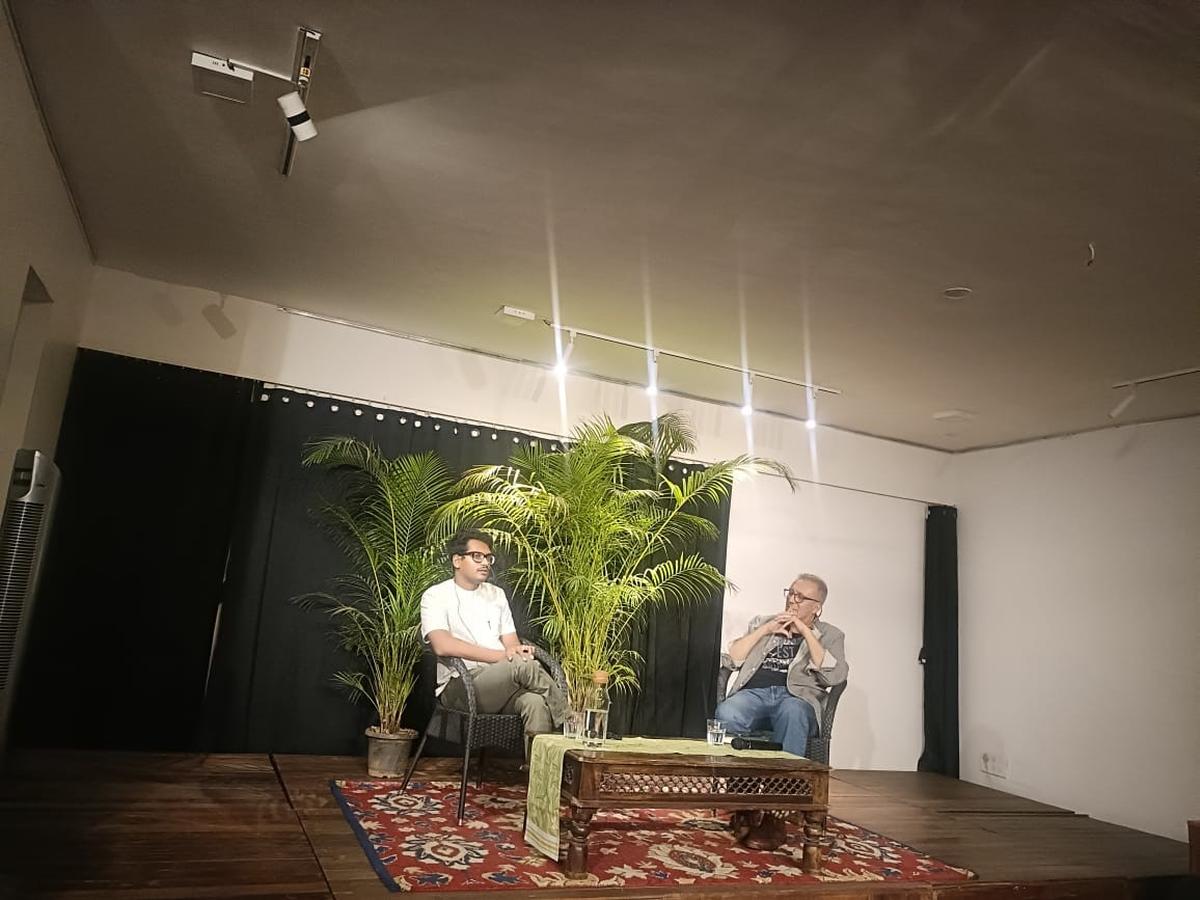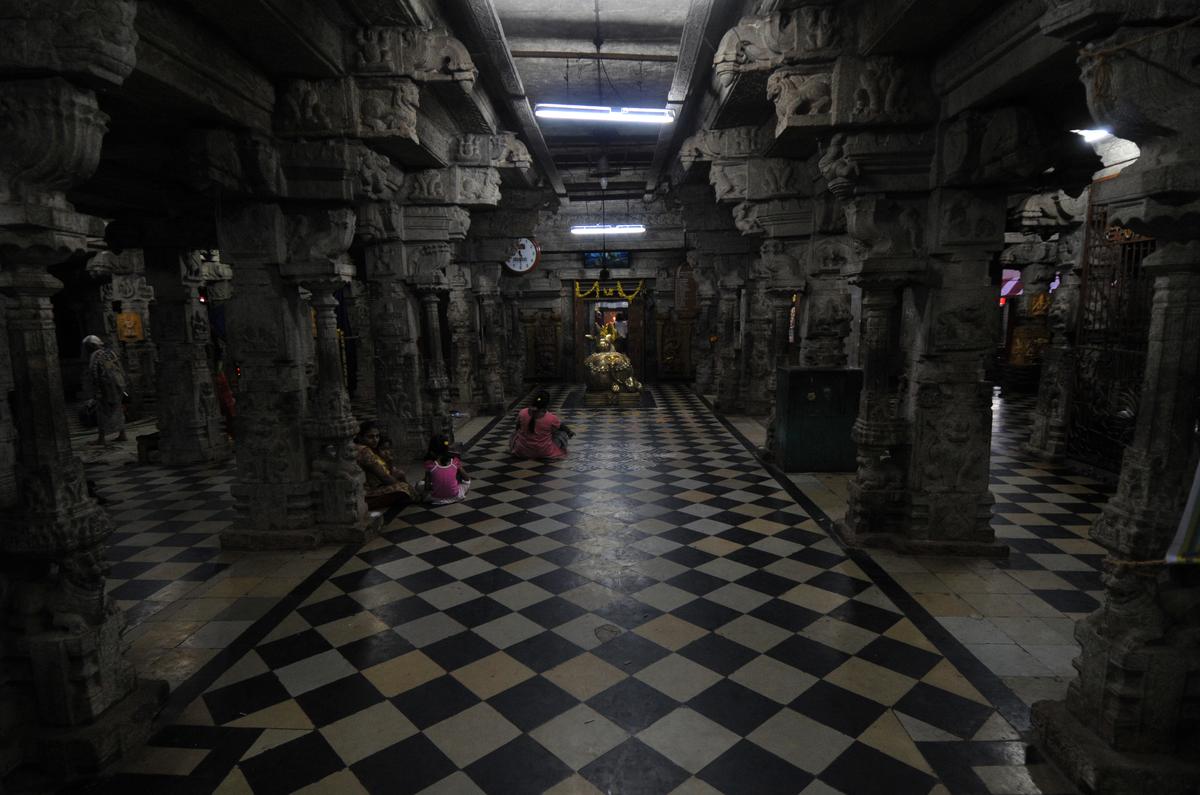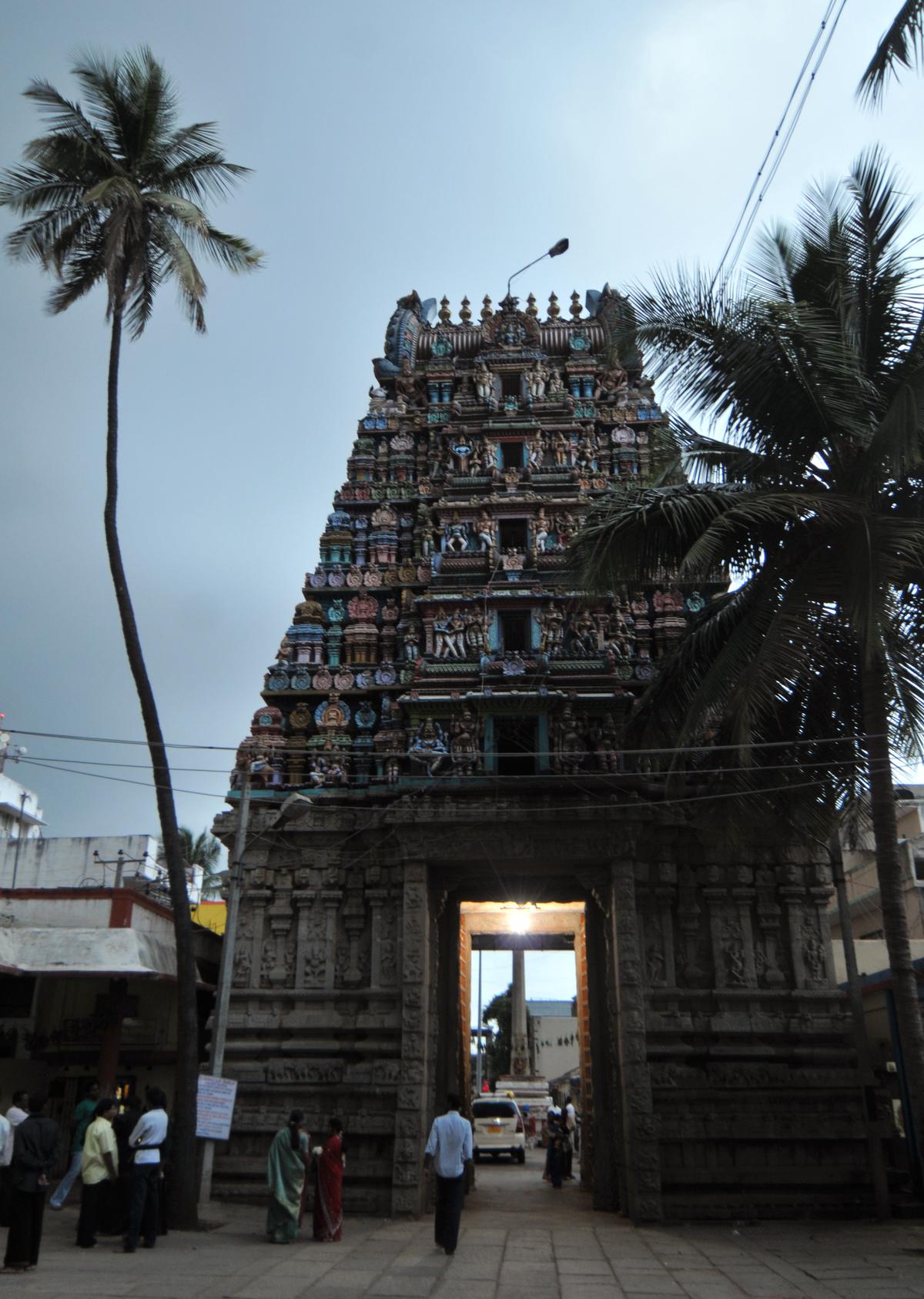Anirudh Kanisetti’s Lords of Earth and Sea: A History of the Chola Empire opens with a poignant scene. It describes the Cheran princess Kokkilan Adikal wiping the tears off her cheeks as she leaves her native Malabar coast in a palanquin, travelling east to be married to “an up-and-coming king with a dangerous reputation.”
The man Kanisetti is referring to is the Chola emperor, Parantaka, “the foe-destroyer”, a third-generation ruler who “killed his half-brother, took the Chola throne and set about marrying women left and right,” at least 10 others, in addition to Kokkilan, all from “rich, landed families.”
Anirudh Kanisetti
| Photo Credit:
SPECIAL ARRANGEMENT
This scene, one of the many vivid episodes described in Kanisetti’s book about the Imperial Chola empire, was read and discussed recently at The Bangalore Room, Indiranagar. What came out in the conversation between writer and podcaster Ramjee Chandran and Kanisetti were intriguing aspects of the lives and reign of the Cholas, including the rationale behind the building of massive temples, the role of women in shaping this clan’s history and the centrality of the merchant guilds to the success of the empire.

Anirudh Kanisetti and Ramjee Chandran.
| Photo Credit:
SPECIAL ARRANGEMENT
The discussion also touched upon how the book draws on literary techniques such as character-building, scene-setting and plot development to delve into “the human part of history,” as Chandran puts it. The traditional way of approaching history as taught in school makes it “a very dry and boring litany of kings and their successions, their battles and dates, dates, dates.” History, however, can also be told “at the junction of different possibilities…for example, architecture, art, culture, language, epigraphy,” believes Chandran. “Where it all overlaps is where the story blossoms.”

Brihadeshwara temple in Thanjavur.
A different sort of empire
In the introduction of Lords of Earth and Sea, Kanisetti writes that the Cholas were a “peasant clan” that arose in the Kaveri floodplain “seemingly out of nowhere” more than a thousand years ago, from the mid-9th century till the mid-13th century. During this period, the Chola dynasty would evolve into one filled with “great King-of-Kings.”
So, what made the Cholas so unique? “There are so many that I could possibly get into. But where I’d like to begin is with the fact that they are willing to break the wall in all kinds of possible ways,” responds Kanisetti. Take, for starters, their building prowess. The Cholas built massive, magnificent temples, such as the Brihadisvara Temple at Thanjavur (built by Rajaraja Chola I and now a UNESCO World Heritage Site), which was much larger in scale than other temples in that part of India. “It was conceived in a completely new kind of architectural plan that was connected deeply with the political incentives of the Chola state,” he explains.
According to him, building these large temples was a clever “media strategy,” with royal edicts inscribed on these temple walls specifying why someone like Rajaraja Chola I, for instance, deserved to be the emperor and was worthy of being worshipped. The practice, he believes, is in the same spirit as modern-day politicians advertising themselves in “places where people are likely to congregate.”

Someshwara Temple at Ulsoor.
| Photo Credit:
BHAGYA PRAKASH
An empire of the coast
Another feature that set the Cholas apart was that it was an “empire of the coast,” unlike the other great Indian empires such as the Vijayanagara and Chalukya empires of the South or the Mauryan and Gupta empires up North. “These are empires of river valleys,” he says. While most of us think of the Cholas as an empire of the Kaveri, their reach went far beyond.
The Chola empire, he says, was able to project power the way it did, not just into the upland Deccan but across the seas, including in Sri Lanka and the Malay peninsula, because they controlled vast swathes of India’s coast. At a time when it took much longer for goods and information to travel, the Cholas were able to transport enormous amounts of granite, men, and rice effectively throughout the empire, thanks to their close alliance with large merchant corporations, believes Kanisetti.
According to him, there is a clear connection between these merchant clans, such as the Aihole or Ayyavole 500, and state expansion. “These are remarkable guys. The boundary between a merchant, a warrior, and a courtier is quite blurry.” It is possible, he says, to see the same person working as a merchant in one year and a courtier the next. The power and reach of the merchant guilds enabled the Cholas to think out of the box in so many ways “because if so many merchants are connected to your court, you have the logistical apparatus to send the armies far away,” he says. “I don’t think it is a coincidence that wherever the Cholas expand, you see merchants setting up soon after.”
Powerful women
The discussion also touched on the role of women in the Chola Kingdom, yet another attribute that seems to have set the Cholas apart and played a key role in their success. “The only time you hear about women in history is when they do everything that the men have done, and that means that they are rulers like Razia Sultana and others,” says Chandran. In reality, many royal women were “actually very, very capable, highly educated, intensely involved in the way that the kingdoms ran…”
Lords of Earth and Sea pays plenty of attention to historical women, including their impact on Chola architectural styles. Kanisetty elaborates, “While the men would go to war, the queens would build temples. And, in a lot of ways, what Rajaja Chola is doing with this temple-building media strategy is building on the foundation established by his great-aunt Sembiyan Mahadevi.”
Sembiyan Mahadevi, the wife of Gandaraditya Chola, was the daughter of the chief of the Kongu region, who came to the Chola court with a relatively meagre dowry: a herd of ungulates. But she had a keen political mind, says Kanisetti. “Sembiyan makes her gifts of goats and sheep to a temple on the northern frontier of the Cholas where they are expanding. So, what she is doing is putting it in a strategic side where loyalties to the Chola family are not fully formed, and she is using her gift to make herself visible to the new subjects.”
In around 972 CE, when her son Uttama ascends the throne, and she becomes the dowager queen. “This woman, who came to the Chola family with little more than sheep and goats, has command of the royal treasury, and she immediately starts building temples,” says Kanisetti. She went on to build at least 12 temples that we know of, all strategically located and with a standard inscription proclaiming the glory of the Cholas. Sembiyan thus lays the foundation for what Rajaraja eventually does.

A view of Someshwara Temple at Ulsoor.
| Photo Credit:
BHAGYA PRAKASH
Legacy and more
Most of us think of the Cholas as a “Tamil empire”, but it is really a South Indian polity… a multi-cultural, multi-ethnic, multi-regional that changed the history of not just South India but more broadly of the world, remarks Kanisetti, pointing out that practices such as the burning of camphor at our altars, processions of Gods, the ubiquity of Nataraja sculptures and the addition of gopurams in many Dravidian-style temples can all be traced back to the Cholas. “These 300 years of Chola rise and fall is the creation of South India as we know it,” he says.
While Lords of Earth and Sea does capture this rise and fall, the various factors that shaped this empire that lasted for several centuries, at its very heart, it is a story “of people who are pushing and pulling and reshaping the fabric of their world,” says Kanisetti.
The people of the past didn’t live exemplary lives to teach us some moral lessons a thousand years later, he remarks. Instead, Kanisetti sees them as human beings “like you and me.” They were, essentially, “people who could not imagine that one day we would be looking to them with this yearning to fulfil some nationalist need or emotional need, but people who just lived interesting and vivid and human lives.”
Published – February 20, 2025 09:00 am IST